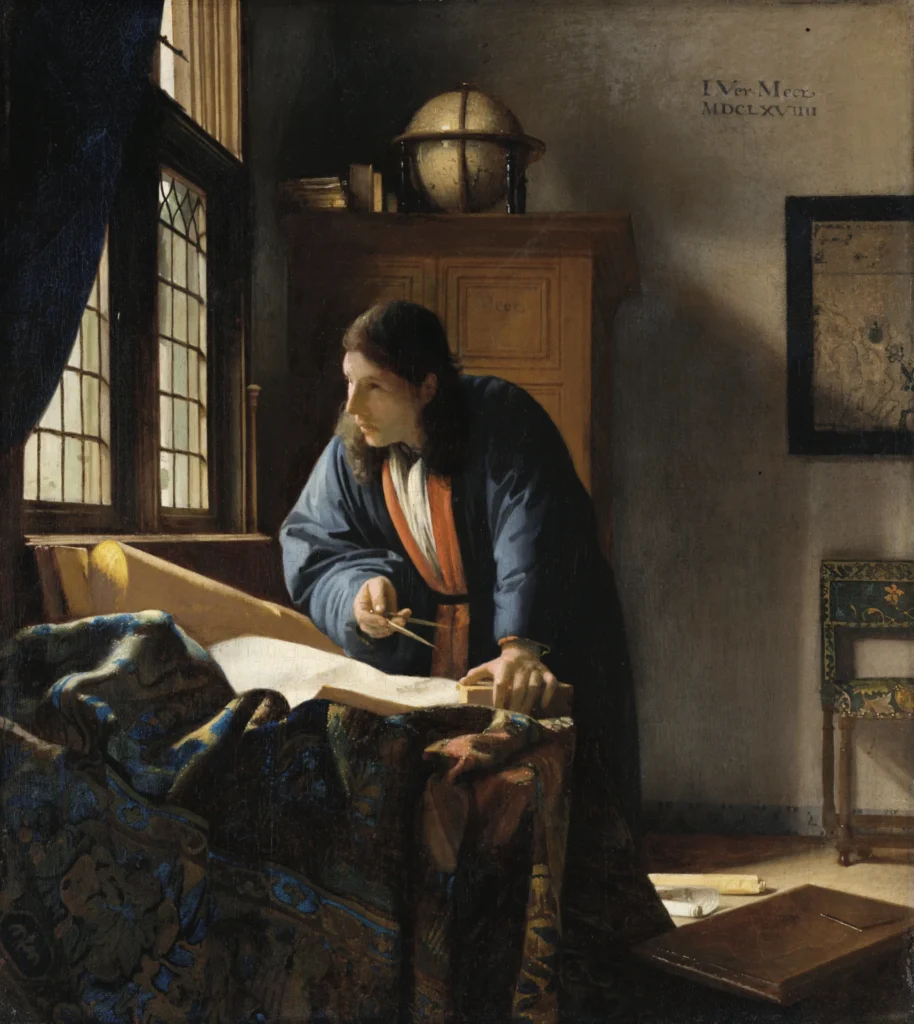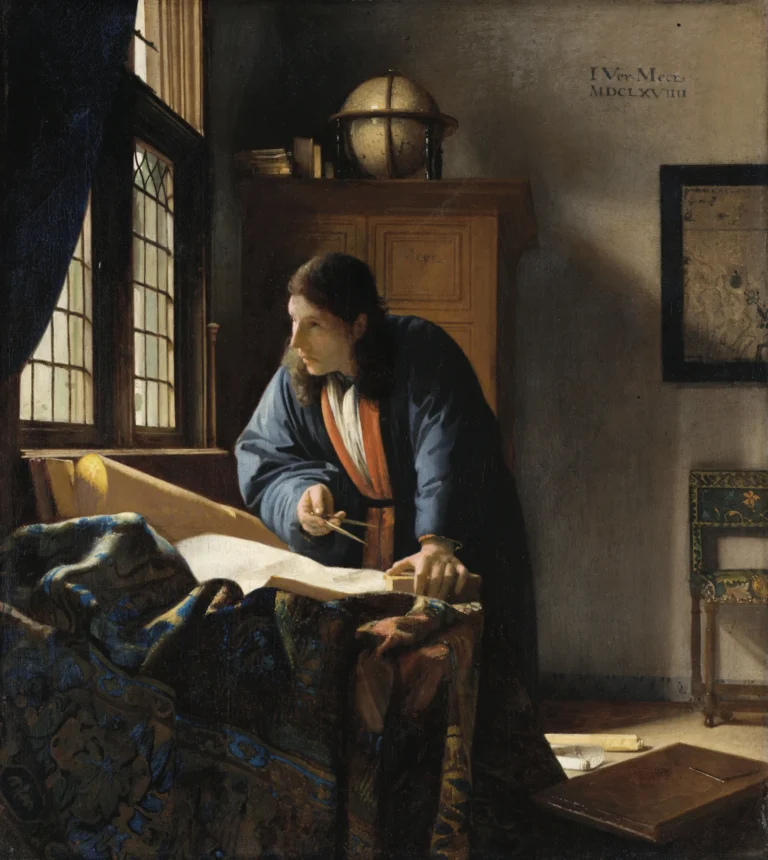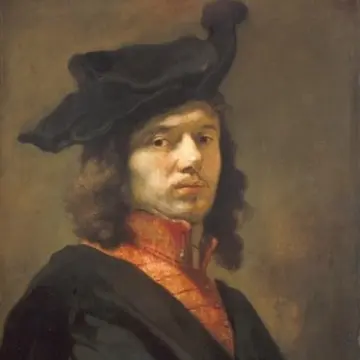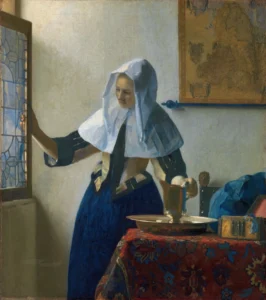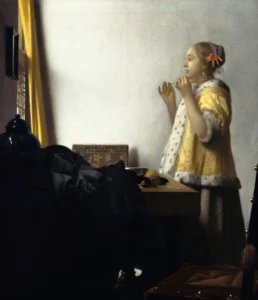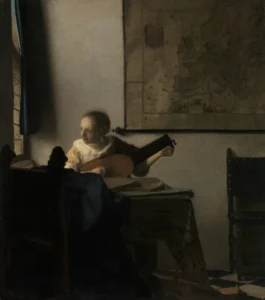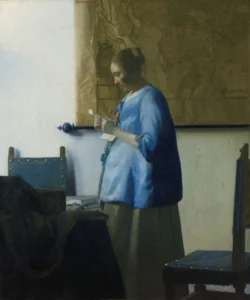The Geographer (1669)
The Geographer, painted by Johannes Vermeer in the late 17th century, presents a thoughtful scholar engrossed in his work, surrounded by maps and instruments. The scene’s natural light enhances the atmosphere of scientific inquiry, embodying the Dutch Golden Age's spirit. Vermeer’s attention to detail and use of vibrant light makes this piece a celebrated example of his artistry.
1668-1669
About the Artwork
Johannes Vermeer, an influential Dutch painter, created The Geographer during a period of significant advancements in science and exploration. The painting depicts a male geographer, dressed in a stylish Japanese robe, fully immersed in his study, contemplating maps and the broader world. Surrounded by various geographical instruments, he holds a divider as he examines a globe displaying the Indian Ocean—a nod to the era's maritime exploration. The careful planning of light entering from the window enhances the ambiance of the scene, characteristic of Vermeer’s celebrated technique. This work not only showcases Vermeer’s artistic prowess but also serves as a reflection of the fervent curiosity and scholarly pursuits that defined the Dutch Golden Age, closing in on the spirit of discovery that characterized the age.
Did You Know
Liked what you see? Add it to your collection.
Enjoyed reading? Share it.
... continued
The Geographer
The painting is the work of Johannes Vermeer, a prominent artist of the Dutch Golden Age. It is one of only three paintings by Vermeer that are signed and dated.
The painting depicts a geographer in a contemplative pose, leaning over a desk covered with maps, charts, and various geographical instruments. The scene is set in a study, illuminated by natural light pouring in through a window on the left side of the composition. The geographer is dressed in a Japanese-style robe, which was fashionable among scholars at the time.
The geographer holds a divider in his hand and is surrounded by tools of his profession, including a globe, a cross-staff hung on the window post, and maps on the table and wall. The globe is positioned to show the Indian Ocean, highlighting the significance of maritime trade and geographical discoveries of the era. The map on the wall is identified as one published by Willem Jansz. Blaeu, depicting the sea coasts of Europe.
Vermeer’s use of light is a hallmark of the painting. The natural light from the window casts shadows and creates a luminous effect, adding depth and realism to the scene. The careful attention to detail and the harmonious use of light and shadow are characteristic of Vermeer’s skill.
The Geographer is closely related to another Vermeer painting, 'The Astronomer,' which is believed to be a pendant piece. Both paintings feature the same model and were likely painted around the same time. They share similarities in theme, focusing on the pursuit of scientific knowledge.
The painting reflects the intellectual and scientific fervor of the Dutch Golden Age, a period marked by significant advancements in science, cartography, and trade. The Netherlands was a leader in globe production during the 17th century, and the painting captures this era's enthusiasm for geographical exploration and scientific inquiry.
The Geographer is housed at the Städel Museum in Frankfurt am Main, Germany.




